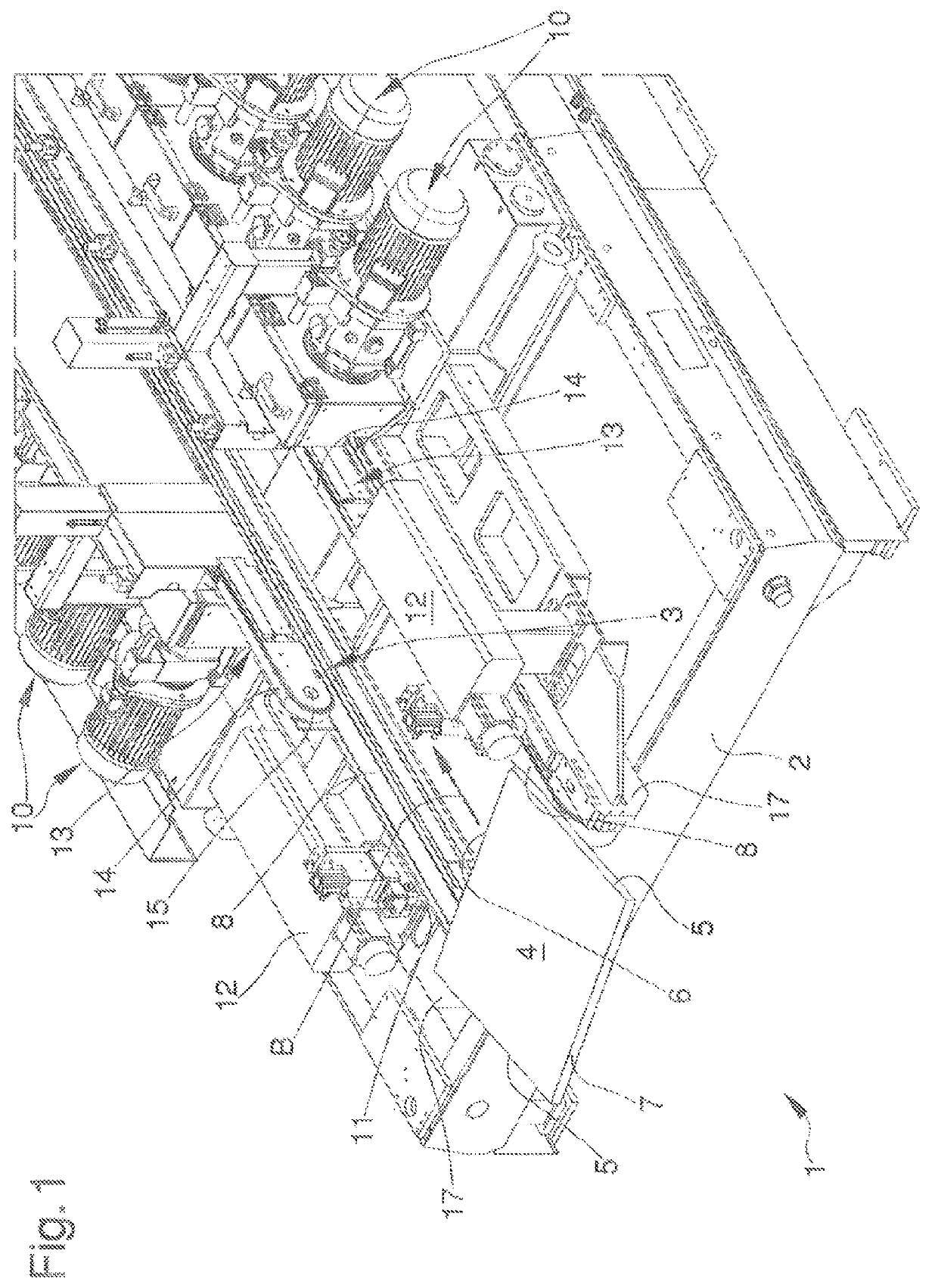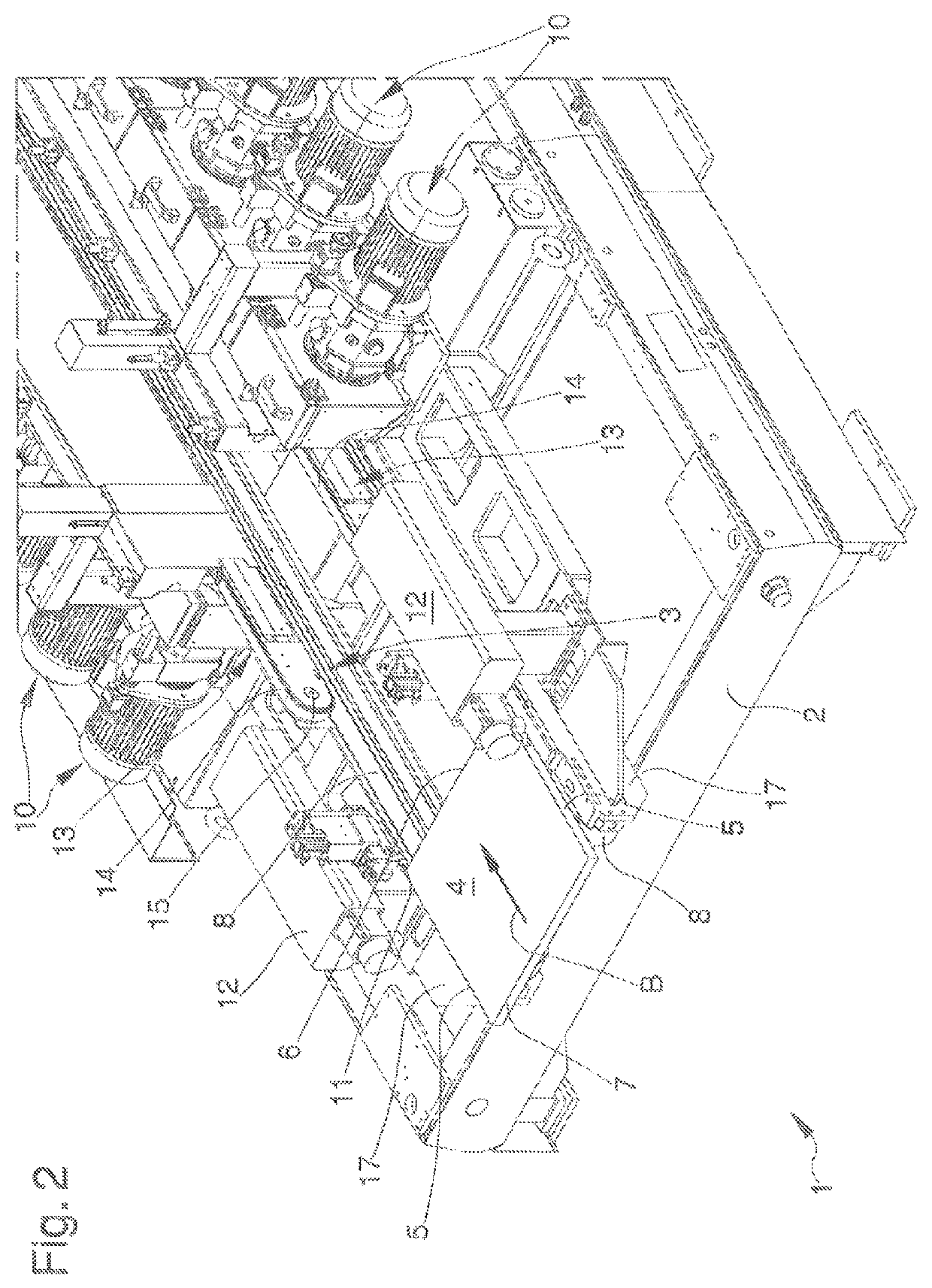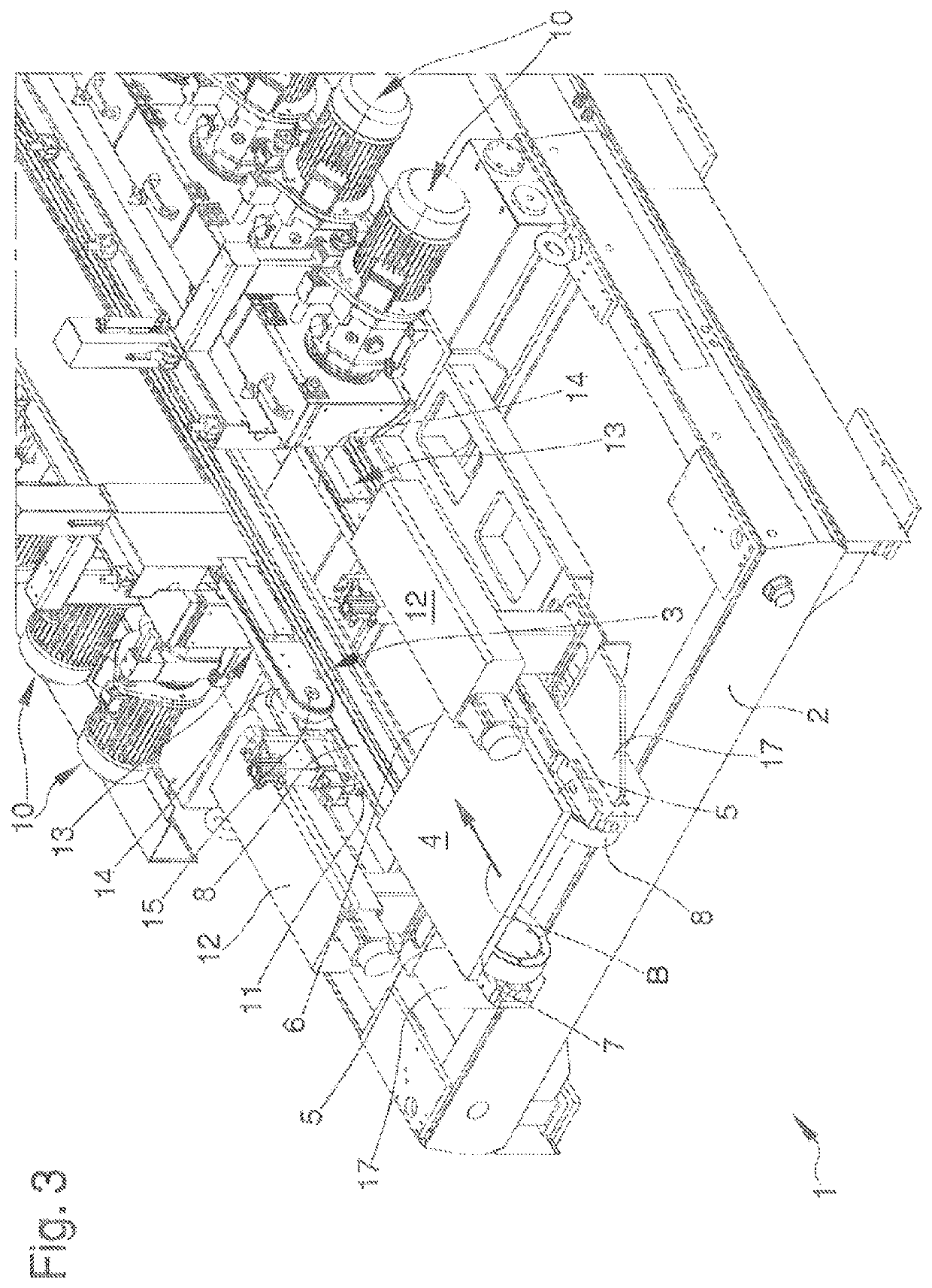Grinding machine for plate-like elements, particularly ceramic tiles and plates, natural stones, glass or similar
a technology of plate-like elements and grinding machines, which is applied in the field of grinding machines for plate-like elements, can solve the problems of affecting the production efficiency of the product, the complexity of the operation setting, and the limitation of productivity, so as to achieve the effect of practical and efficient operation
- Summary
- Abstract
- Description
- Claims
- Application Information
AI Technical Summary
Benefits of technology
Problems solved by technology
Method used
Image
Examples
first embodiment
[0071]In a first embodiment, shown in FIGS. 1 to 4, the pressing means 13 comprise a pair of flexible members 14, such as belts, conveyors or the like, closed loop-like and each of which is at least partly wound around a second actuation pulley 15.
[0072]In this first embodiment, the flexible members 14 extend longitudinally with respect to the advancement direction B and they are arranged symmetrically with respect to the vertical plane longitudinal to the advancement direction.
[0073]More in detail, the flexible members 14 are arranged above the relative flexible elements 8 and they are adapted to press the sheet-like element 4 against the flexible elements.
[0074]Upon reaching the square position of the sheet-like element 4 and following the displacement of the abutment elements 11 from the operative position to the inoperative position, the sheet-like element 4 is inserted between the flexible elements 8 and the flexible members 14.
second embodiment
[0075]In a second embodiment, shown in FIGS. 5 to 7, the pressing means 13 comprise a pair of wheel units 16.
[0076]More in detail, each wheel unit 16 is arranged above a relative flexible element 8. Similarly, to the first embodiment described above, both wheel units 16 are arranged above the relative flexible elements 8 and they are symmetric with respect to the vertical plane longitudinal to the advancement direction B.
[0077]In both embodiments shown in the figures, the pressing means 13 are interposed between the abutment elements 11 along a direction transversal to the advancement direction B.
[0078]In other words, the abutment elements 11 are arranged externally with respect to the pressing means 13 to intercept the sheet-like element 4 at the end portions of the front side 6.
[0079]The present invention also regards a method for grinding sheet-like elements, particularly tiles and slabs made of ceramic material, natural stone, glass or the like, described below.
[0080]In particul...
PUM
 Login to View More
Login to View More Abstract
Description
Claims
Application Information
 Login to View More
Login to View More - R&D
- Intellectual Property
- Life Sciences
- Materials
- Tech Scout
- Unparalleled Data Quality
- Higher Quality Content
- 60% Fewer Hallucinations
Browse by: Latest US Patents, China's latest patents, Technical Efficacy Thesaurus, Application Domain, Technology Topic, Popular Technical Reports.
© 2025 PatSnap. All rights reserved.Legal|Privacy policy|Modern Slavery Act Transparency Statement|Sitemap|About US| Contact US: help@patsnap.com



